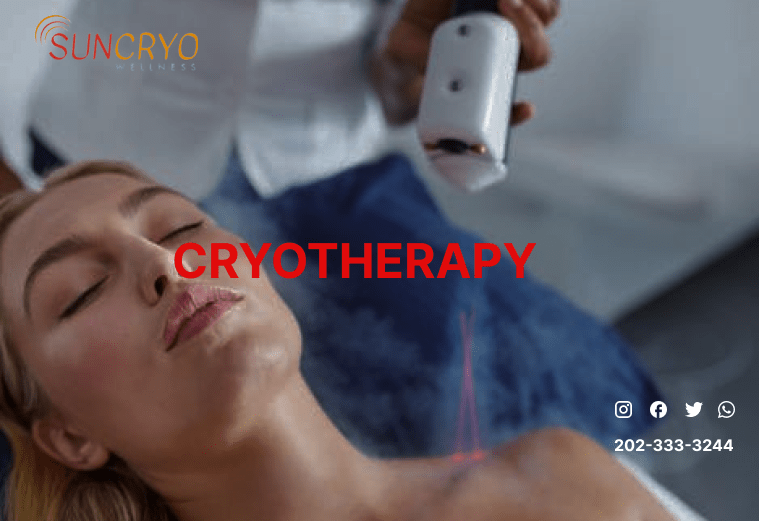Cryotherapy

Welcome to our comprehensive guide on cryotherapy, a groundbreaking medical treatment that harnesses the healing power of cold temperatures. In this article, we will explore the various applications of cryotherapy, its benefits, and how it can revolutionize the way we approach medical and therapeutic interventions. https://georgetownsuncryo.com/
Understanding Cryotherapy
Cryotherapy is a therapeutic technique that involves exposing the body or specific body parts to extremely cold temperatures for a controlled period. This procedure triggers a range of physiological responses that can have significant health benefits, from pain relief to tissue regeneration.
The Science Behind Cryotherapy

Cryogenic Temperatures and Cellular Response
When the body is exposed to cryogenic temperatures, the blood vessels constrict and then dilate, leading to increased blood flow to the targeted area. The sudden change in blood flow stimulates cellular repair, reduces inflammation, and releases endorphins, resulting in pain relief and enhanced healing.
Triggering the Cold Shock Response
Cryotherapy activates the body’s cold shock response, where it attempts to maintain core temperature by drawing blood to vital organs. As a result, the body releases anti-inflammatory cytokines, which help reduce inflammation and accelerate healing processes.
Cryotherapy Applications in Medicine
Pain Management and Inflammation
Cryotherapy has proven highly effective in managing various types of pain, such as joint pain, muscle soreness, and chronic conditions like arthritis. By reducing inflammation and numbing pain receptors, cryotherapy offers a natural and non-invasive alternative to pain relief medications.
Sports and Athletic Recovery
Many athletes and sports professionals have embraced cryotherapy as an essential part of their recovery routine. Cryotherapy sessions after intense physical activity can help reduce muscle fatigue, promote faster healing of microtears in muscles, and improve overall athletic performance.
Skin Rejuvenation and Cosmetic Use
In dermatology and aesthetics, cryotherapy is employed for skin rejuvenation and the treatment of certain skin conditions. Cryogenic temperatures promote collagen production, leading to improved skin elasticity, reduced appearance of wrinkles, and enhanced complexion.
Cryosurgery for Tumor and Lesion Removal
Cryosurgery, a specialized form of cryotherapy, is utilized in oncology and dermatology to target and destroy abnormal tissues, such as tumors and precancerous lesions. Extreme cold temperatures cause cellular destruction, effectively removing unwanted growths.
Cryotherapy Techniques and Procedures
Whole Body Cryotherapy (WBC)
Whole-body cryotherapy involves exposing the entire body to extremely cold temperatures, typically in a cryotherapy chamber or cabin. Clients wear minimal clothing, and the temperature is controlled by a trained operator. WBC sessions usually last for a few minutes, during which the body receives numerous health benefits.
Localized Cryotherapy
Localized cryotherapy targets specific areas of the body, such as joints or muscles, using specialized cryotherapy devices. This targeted approach allows for more precise treatment of injuries or localized pain.
Safety Considerations and Precautions
While cryotherapy is generally safe and well-tolerated, it is essential to consider certain precautions:
Professional Supervision
Cryotherapy sessions should be conducted under the supervision of trained professionals who can monitor the process and adjust the treatment according to individual needs.
Contraindications
Cryotherapy is not suitable for everyone. Individuals with certain medical conditions, such as Raynaud’s disease, cold allergies, or cardiovascular issues, should avoid cryotherapy.
Gradual Exposure
For individuals new to cryotherapy, it is recommended to start with shorter exposure times and gradually increase the duration to allow the body to adapt.
Conclusion
Cryotherapy is a cutting-edge therapeutic technique that holds immense promise in revolutionizing the way we approach pain management, healing, and overall well-being. By tapping into the natural healing power of cold, cryotherapy offers a non-invasive and effective alternative to traditional treatments. https://georgetownsuncryo.com/
Embrace the cold and unlock the potential of cryotherapy to lead a healthier, more vibrant life. Consult with medical professionals to determine if cryotherapy is the right option for your specific needs, and experience the wonders of this innovative medical approach. for further details click here https://dermnetnz.org/topics/cryotherapy

